The purpose of primers is to ignite the main powder charge. However, there are more considerations than mere caliber and type when looking at the ignition end of a cartridge.
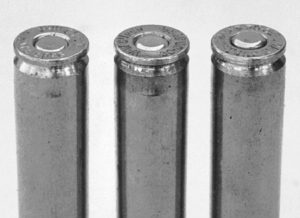
Match locks, equipped with a slow-smoldering fuse made of chemically treated rope called a “match,” would burn out in damp weather and could be blown out by wind. Wind and damp were the enemies of flintlocks that could blow the priming charge out of the funnel-shaped pan or saturate it with moisture to the point where it would not catch fire. Rust and powder fouling in the tiny tube that connected the charge in the pan to the propelling charge in the barrel often prevented a successful firing with only the priming charge burning.
The expression “a flash in the pan” is still used to describe a person or enterprise that shows promise, but fails to get past a good beginning. Under the best of circumstances, the flintlock system gave only reasonable reliability. A small piece of cut flint held in the jaws of the hammer struck a steel cover on the pan called a frizzen, knocking it open and scraping the inner side to throw sparks into the powder charge in the pan.
In terms of speed it was slow. Anyone who has seen a flintlock fired is familiar with the puff-boom! sound of the report as the priming charge burns with a one-beat pause before the propelling charge fires. History is filled with untold numbers of targets, animal and human, who have ducked to safety during that beat, which was sometimes two beats if the day was damp and the tube to the barrel a bit clogged.
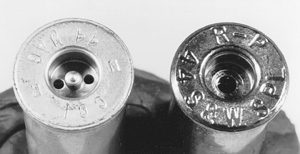
Explosives such as fulminate of mercury and mixtures including potassium chlorate that detonated when crushed or struck, were discovered late in the 18th century. After attempts to use them as substitutes for gunpowder failed, they received little attention until the early 19th.
The breakthrough to improved ignition was made by a Scottish Presbyterian minister, hunter, shooter and gun buff — Reverend Alexander Forsythe — who was the first to come up with the idea of using these detonating explosives to ignite propelling charges in firearms. He received a patent in 1807 for a system that did away with the priming pan on the flintlock and filled the tube leading to the barrel with a percussion explosive made of sulphur, potassium chlorate and charcoal.
A metal pin was inserted on top of the explosive which caused it to detonate when struck by the gun's hammer. The ignition was far faster and more certain than the flintlock. Forsythe improved his design by attaching a small iron bottle containing a supply of percussion explosive to the side of the lock. The bottle could be tipped or turned to deposit a small pellet of explosive on a touch hole which would be struck by the hammer. The system worked effectively. However, it involved having a small iron bottle filled with explosive very close to the firing point and to the face of the shooter. I have never encountered a report of an accident with a Forsythe lock, but if one happened, it would almost certainly have been fatal.
The superiority of the Forsythe system was soon recognized and dozens of priming systems were introduced including percussion wafers, tubes and strips of paper caps, much like those used in toy cap pistols.
The most successful was the percussion cap invented in about 1814 by Joshua Shaw — a British subject who emigrated to America. Shaw's system featured a small steel cup, about the size of a modern large pistol or large rifle primer. The closed end contained the explosive held in place by a tinfoil cover then sealed with a drop of lacquer. This made it waterproof as well as damp proof. The cap was fitted on a short iron nipple, hollow in the center, screwed into the breech of the barrel.
This allowed the fire to enter the chamber of the gun. Shaw came to America in 1814 and began perfecting a lock to work with his invention. Shaw caps were on the market by 1821 and were soon adapted to sporting guns. Improvements were made by changing the cap metal to pewter and later copper. Similar caps were in use about the same time over most of Europe. The percussion cap was not adopted by the U.S. military until after the Mexican War. The military thinking at the time was that the percussion cap was yet another component the soldier had to carry and not reusable in the manner of a gun flint.
Percussion caps made the Colt revolver a practical reality, but the shortcomings of this system became apparent when repeating rifles were made using this system. A “flash over” from one chamber to the next would occasionally send a bullet coasting by the side of the gun. With a handgun this was of little consequence since it was a one-hand weapon. With the rifle or shotgun such an event often amputated the fingers or thumb of the hand supporting the fore-end of the weapon. Revolving rifles, not surprisingly, did not gain much popularity.
Breechloading arms, other than revolvers, using percussion ignition did not fare much better mainly because no one was able to come up with an effective means of engineering a gas-tight seal at the breech closure.
Not surprisingly the first really successful breechloaders and successful repeating arms, other than revolvers, required a self-contained, self-primed cartridge. The step to the rimfire cartridge from the percussion cap was a small but logical evolution. George Morse placed a percussion cap in the head of a metal cartridge using a hairpin-shaped anvil inside the case to fire it. Hiram Berdan shortened the hairpin to a tiny knob, while Edward Boxer placed a tiny anvil inside the cap.
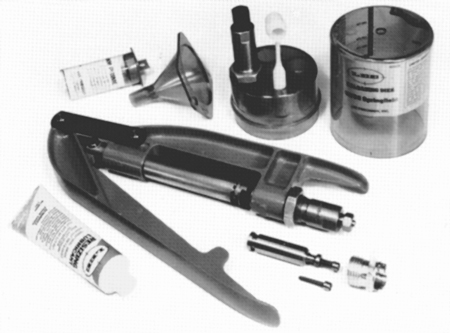
CENTER PRIMED
Centerfire ammunition soon pushed all the other non-reloadable types out of the market because it was reloadable. Rimfires were gradually reduced to those types that were small and efficient in calibers that would not lend themselves to reloading.
The military had great influence in ammunition development stipulating that any ammunition developed for a military small arm had to be reloadable. Spent cases were collected and returned to a government arsenal for reloading during peacetime. Professional hunters in the American west needed cartridges they could reload themselves with simple tools. It was this type of equipment that first appeared in the 1870's.
Early priming mixtures used fulminate of mercury or potassium chlorate, eventually, a combination of both. These fulfilled most of the criteria for good ignition — speed, reliability, uniformity and cleanliness, with the possible exception of cleanliness. While the chlorate-based primers did not leave an appreciable residue, they did leave a highly corrosive deposit — potassium chloride — that would eat away a percussion nipple or the web of a cartridge unless neutralized by cleaning with water that removed the salt deposit. The mercury-based compounds were both clean and non-corrosive. Their drawback came when used in combination with brass or copper primer cups and brass or gilding-metal cartridge cases.
When fired, the mercury would amalgamate with the copper or brass, making it extremely brittle. The heavy fouling of blackpowder had a mitigating effect on mercury contamination, keeping it in the fouling allowing removal. With smokeless powder, reloading and firing such a contaminated cartridge case can lead to a case-head rupture. In a high pressure loading this can wreck a gun and possibly your face. Mercuric priming was gone from commercial ammunition by about 1945, but mercuric primers made prior to this time were used by commercial reloaders after that and some of them may still be on shelves somewhere.
Because fulminate of mercury contains free, liquid mercury, this mercury will actually migrate through the priming mixture and into the metal of the primer cup or cartridge head after a certain number of years. Ammunition primed with mercuric mixtures made in the early 1930's will probably not fire today while ammunition loaded with chlorate priming made during the Civil War is often still viable, so long as neither the powder or priming compound has been exposed to moisture. Thus a fifth criterion should be added to a successful ignition system — long life.
From 1928 through 1935 American manufacturers worked to perfect a priming mixture akin to the one developed in Germany that was non-corrosive and did not contain mercury. The basis of such priming is in compounds of lead, barium and antimony.
>Early non-corrosive, non-mercuric primers did not work very well, giving uneven ignition. Priming material often fell out of the rim in rimfire cartridges as the binding material — a vegetable-based glue — deteriorated.
THE MODERN PRIMER
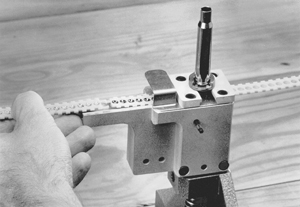
Modern primers of the lead, barium and antimony type fulfill all the necessary criteria for good ignition. The binders are now stable and remain stable for long periods under normal “house” storage conditions where temperatures are under 125 degrees Fahrenheit and moisture is kept at a reasonable level. The newest are the “lead free” primers of tetracene. These, however, are not presently sold as reloading components since the production demand is for finished ammunition. The primary use of such primers is in handgun ammunition to be fired in indoor ranges where airborne lead could present a health hazard.
Because of the difficulty of reloading them, cartridges using Berdan primers and the Berdan primers themselves have virtually disappeared from the U.S. Foreign cartridges often still use this type of priming and can only be reloaded with Berdan primers.
Any attempt at “converting” Berdan cases to Boxer priming by drilling them in some manner will not work and such attempts are very dangerous since they will greatly enlarge the flash hole and may damage the web. At best such conversions give uneven ignition; at worst they can raise pressures to dangerous levels by causing too rapid a burn of the powder charge. The only current source for Berdan primers and Berdan decapping equipment is The Old Western Scrounger.
A modern Boxer primer differs little in structure from those made over a century ago. It is a brass cup containing the priming compound. A paper seal keeps the compound in the cup and is held in place by the metal anvil made of harder brass. A better understanding of metallurgy and chemistry has resulted in a more uniform primer as well as ones which are specifically tailored to a particular type of cartridge.
Primers for pistols and rifles come in two basic sizes: “small” (.175″ diameter) and “large” (.210″ diameter). There is a .317″ primer manufactured by CCI used only in the .50 Browning machine gun cartridge – loaded by a few shooters using extra heavy bench-rest rifles in this caliber.
Small pistol primers are used in such calibers as 25 and 32 caliber handgun ammunition while the large size are used in 41, 44 and 45 caliber handguns. Large pistol primers are also made in a “magnum” variant. These are for large capacity cases using slow-burning powders that are harder to ignite and require a longer-burning, hotter primer to draw the most uniform and complete burning from these powders.
Rifle primers are made in the same two diameters as pistol primers and are designated “small” and ”large” although they are slightly higher to fit the deeper pocket in the rifle cartridge case. For this reason pistol primers should not be seated in rifle cases since they will seat too deeply and will thus often give uneven ignition. Rifle primers contain more priming compound than pistol primers since they have to ignite more powder in larger capacity cases. If you are loading both handgun and rifle ammunition, care must be taken not to mix rifle and handgun primers.
If rifle primers are seated in pistol cases they will not fit properly. They can also raise pressures to the danger point. Pistol primers tend to burn cooler, and produce more of a flame type of explosion — good for igniting fast-burning pistol powders. Rifle primers burn longer and hotter. They often contain metallic elements such as aluminum which create burning sparks that are blown forward into a charge of slower-burning powder.
This separates, the grains thus setting the charge on fire in a number of places at once to achieve an even burning of the charge. This explosive quality is known as “brisance.” Magnum rifle primers have still more compound, burn longer and hotter and are used in very large-capacity cases such as the 458 Winchester Magnum. Companies such as CCI also market a “bench rest” rifle primer.
This is simply a standard rifle primer, but made to very strict tolerances assuring the reloader that each primer in a given lot will have a very precisely measured amount of compound and that the diameter and hardness of all components are within very strict tolerances. These premium-quality primers give very even ignition needed for the exacting demands of the expert, competition target shooter.
Shotshell primers have special characteristics needed to work properly in modern, plastic shotshells. Early shotshells were made of brass and were generally of a rifle-type of construction. They used rifle-style primers. Modern shells are of a composite construction with a metal head surrounding a paper, now primarily a plastic body. Inside is a base wad made of plastic or compressed paper.
Shotshells have unique ignition problems. As the mouth of the shell becomes worn and softened with repeated reloading the opening of the crimp becomes progressively easier. Modern shotgun powders require a certain amount of pressure and confinement to function properly. This decreases as the crimp softens. For proper ignition, the powder requires a very high temperature over a longer than usual burn time but without the brisant quality of the magnum rifle powder which would tend to blow the crimp open before much of the powder was ignited. A shotshell primer produces what is often referred to as a “soft ignition.”
Because of the design of modern shotshells, the primer is held in a large, longer than normal housing called a “battery cup” which extends well into the base wad so the flame issuing from the primer mouth will not be inhibited by any part of the wad and can direct its full blast into the powder charge.

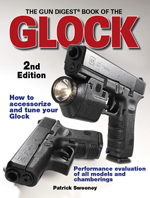
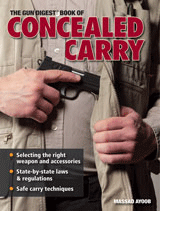
 BRUNSWICK — A Brunswick man shot an intruder who broke into his apartment late Thursday night, Glynn County police said.
BRUNSWICK — A Brunswick man shot an intruder who broke into his apartment late Thursday night, Glynn County police said. New!
New!
 Gun Digest 2011, The World's Greatest Gun Book, 65th Edition
Gun Digest 2011, The World's Greatest Gun Book, 65th Edition 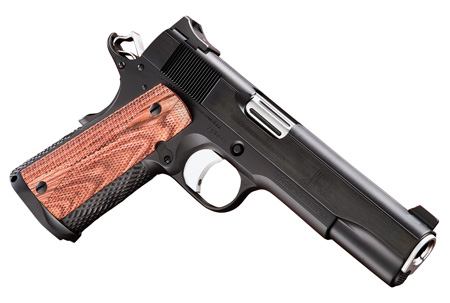
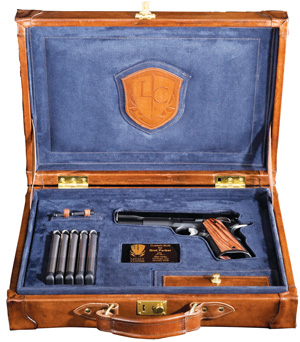


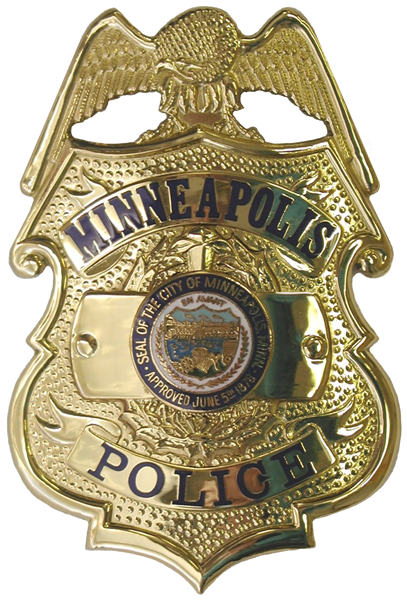
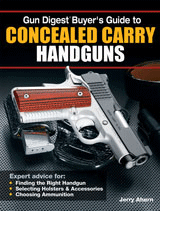 New!
New!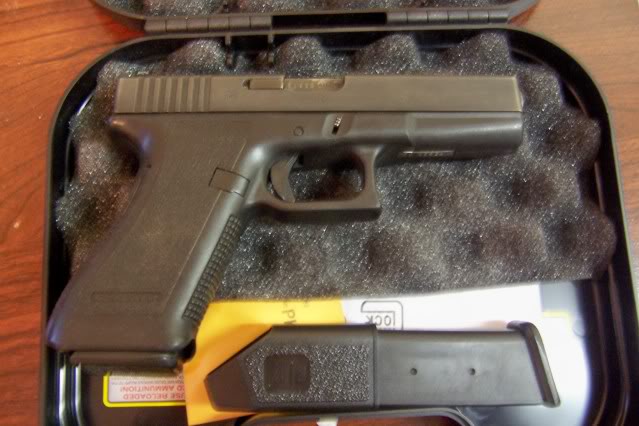

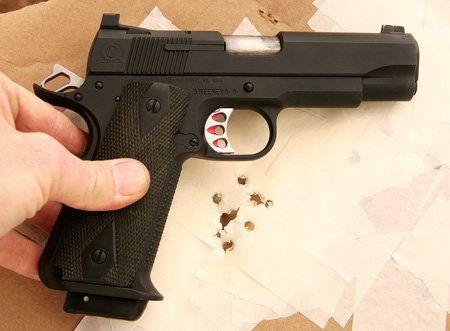

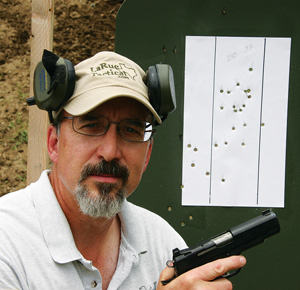

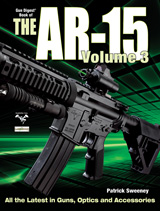


![Best Concealed Carry Guns In 2025 [Field Tested] Wilson Combat EDC X9S 1](https://gundigest.com/wp-content/uploads/Wilson-Combat-EDC-X9S-1-324x160.jpg)


![Best 9mm Carbine: Affordable PCCs [Tested] Ruger Carbine Shooting](https://gundigest.com/wp-content/uploads/Ruger-Carbine-Shooting-100x70.jpg)
![Best AR-15: Top Options Available Today [Field Tested] Harrington and Richardson PSA XM177E2 feature](https://gundigest.com/wp-content/uploads/Harrington-and-Richardson-PSA-XM177E2-feature-100x70.jpg)
